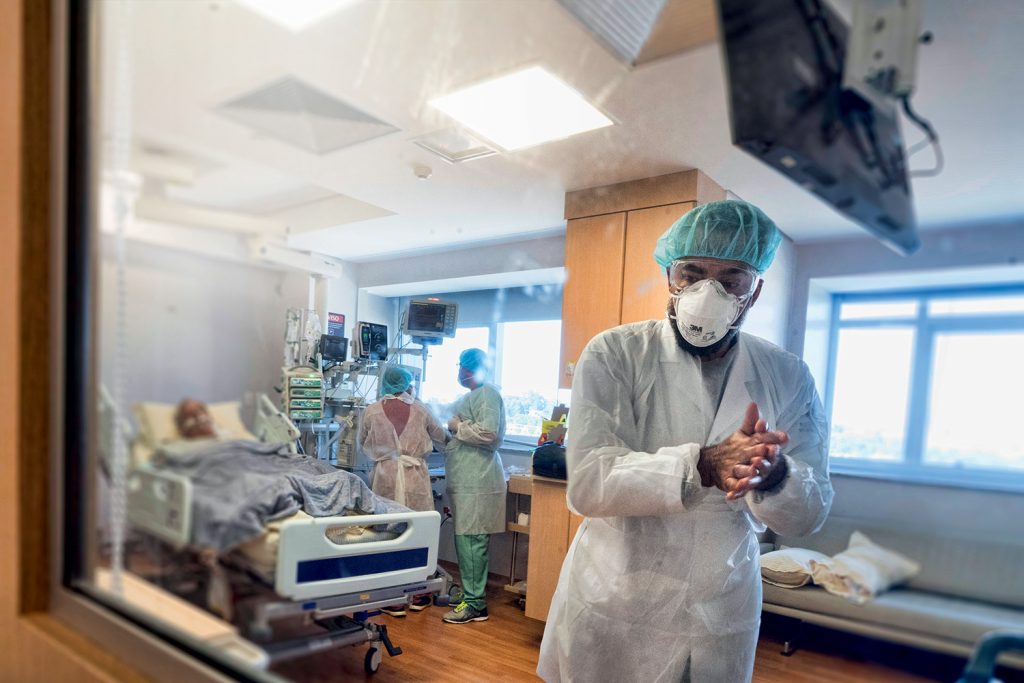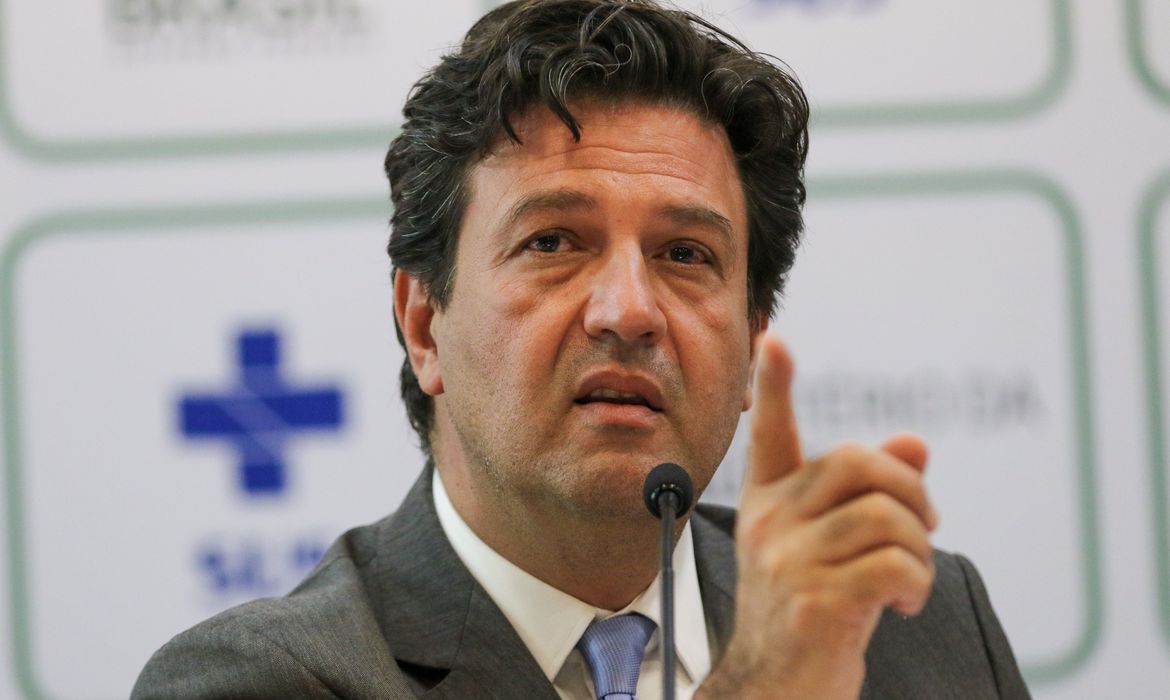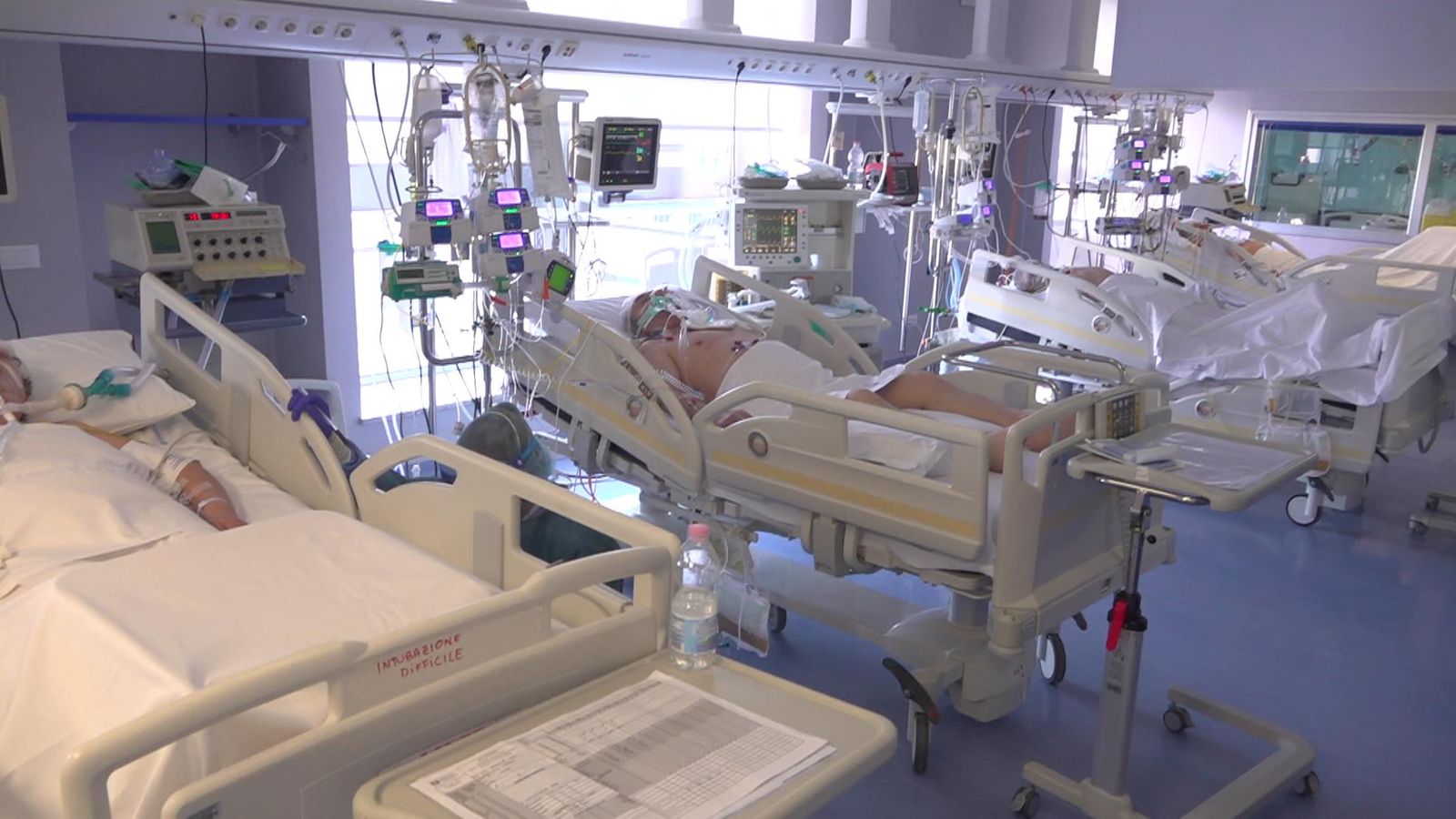RIO DE JANEIRO, BRAZIL – The fast spread of coronavirus in Brazil has alerted the health system to the risk of collapsing. The Federal Government – which officially reports over 1,000 confirmed cases and 11 deaths in the country – is working with the prospect that this may happen at the end of April if social distancing measures are not strictly observed.
The basic support for the care of patients with the Covid-19 is the hospitals and especially the intensive care units (ICUs), where the most critical patients must be referred. However, official data on the occupation of these units, which were already at their limit before the pandemic, are still inconclusive.

Officially, the Ministry of Health is working to expand the number of backup beds and ensure a minimum structure of ten of them in all states, but it offers no data on the evolution of ICU beds’ occupation with coronavirus patients. It only states that the occupation rate in all ICUs before the epidemic was 78 percent, but it does not differentiate between adult and infant beds.
In Brazil, there are at least 176 people diagnosed with coronavirus now hospitalized in ICUs, 157 of them in the country’s Southeast region. The numbers consider only the beds recorded in a platform called Brazilian ICUs, that covers one-third of all 32,000 adult beds of this type in both public and private hospitals in Brazil.
They shed light on how the demand for intensive care facilities is growing in the country, particularly in the Southeast. According to data recorded on the platform, in three days the number of patients confirmed with the Covid-19 in these ICUs has almost doubled.
There were 93 on Tuesday. On Thursday, the number increased to 176 hospitalizations. The number of infected patients in ICUs may be even higher, however, since suspected cases are not included in this report.
Despite the increased demand, for the time being there is no shortage of beds for patients, assures Ederlon Rezende, member of the advisory board of the Brazilian Intensive Care Medicine Association (AMIB) and director of the intensive care service of the Hospital do Servidor Público Estadual in São Paulo.
Both public and private hospitals are working to cancel non-emergency procedures, release additional beds and adapt the workflow. The goal is to avoid contagion within the units and increase the care structure focused exclusively on likely coronavirus cases.
“In my close to 30 years in the business, I have never seen a similar effort from north to south in the country; everyone working to expand the care capacity and better management of their beds,” Rezende says.

The plan has been structured by each hospital and, faced with a great inequality of resources and structure among them, if some manage to clear beds and isolate areas, other smaller ones are working to at least reorganize the workflow and provide as much space as possible to accommodate coronavirus patients. The task is difficult since the demand for care for other diseases remains steady and adds to the demands resulting from the Covid-19.
The Hospital do Servidor Público Estadual in São Paulo has reserved a wing with four beds for patients with suspected or confirmed coronavirus cases. Currently, two are occupied. If one more patient is admitted to this ICU and it reaches 75 percent capacity, the plan is to open a new unit with more beds to treat exclusively Covid-19 patients and to suspend all elective surgeries, so as to relieve the regular ICU.
The plan is to work on scale from then on, opening new wards specifically for these patients.
“But the world doesn’t stop in ICUs. You can stop shopping malls, transports, restaurants. We must take care of the other patients. We separate wards to treat coronavirus cases while caring for them,” explains Rezende. Other hospitals are taking similar measures. Officially, the São Paulo state government said there were 24 patients in ICUs on Friday, all in private hospitals.
In the city of São Paulo, the epicenter of the crisis in the country, Mayor Bruno Covas announced that he will release 2,000 regular beds to treat patients with milder Covid-19 infections at the Pacaembu and Anhembi stadiums. This provides room for public hospitals, for instance, to prioritize their structures and open new ICUs.
Recommendation and “maturity”
The issue is that the speed of infection is such that, even with adjustments, the public and private health systems are at risk of collapsing, as occurred in Italy. In any event, the government insists that it is not yet time to impose quarantine on everyone, as is already the case in Argentina.
The Ministry of Health maintains its advice to quarantine people with flu symptoms and those with whom they share the same home, even if they are asymptomatic. It further recommends the isolation of people over 60, a group that is statistically at greater risk of developing a severe condition of the disease. The Ministry of Health also says that people with flu symptoms should seek health posts for screening.
Emergency facilities or hospitals will accommodate patients referred to these units. Even in the private network, the guideline is for the population to refrain from going to the hospital needlessly since the environment is conducive to the spread of viral diseases. The risk is that going to these units for mild symptoms and may end up contracting or spreading the coronavirus.

In hospitals, patients with flu symptoms who start to develop more severe respiratory symptoms (such as shortness of breath) are being handled as suspected cases of the Covid-19. There are currently insufficient tests for everyone, so they are examined under the coronavirus protocol, which establishes early mechanical ventilation when respiratory failure worsens.
Patients with several symptoms (flu or otherwise) keep coming to hospitals, which need to adjust to follow the Ministry of Health’s guidelines: to speed up care and establish specific flows for suspected coronavirus cases.
São Paulo’s Hospital do Coração (HCor) attends a large number of elderly and cardiac patients, who are included in the group of greatest risk of complications by Covid-19. “Our hospital will not be able to stop (some non-emergency surgeries and procedures) because our patients demand a great deal of care,” explains Dr. Pedro Mathiasi, HCor’s infectologist.
As a result, the hospital has set up two structures to separate influenza patients. At the entrance, the patients are screened and those with flu-like symptoms are given a mask, instructed to sanitize their hands and sent to an exclusive area for people who may have contracted the coronavirus.
A challenging task is to get smaller hospitals and emergency care units to replicate this procedure. In the midst of the coronavirus crisis, healthcare professionals have even reported the rationing of masks and hand sanitizer for themselves, which makes it difficult to provide this structure to patients.
“The Ministry of Health and the WHO protocol is very clear, which is to capture these patients as soon as they reach the unit. The challenge is to make it work in practice, because each hospital has its own structure and resources,” Mathiasi explains.
Given the tremendous structural and financial inequality among hospitals, the doctor says HCor has helped smaller units replicate at least the operational management aspect, to try to reduce contagion in hospitals and expedite care. All this is happening within the context of chronic public health service (SUS) issues, such as the scarcity of supplies and limited resources, even with the recent governmental reinforcement.
Source: El País

